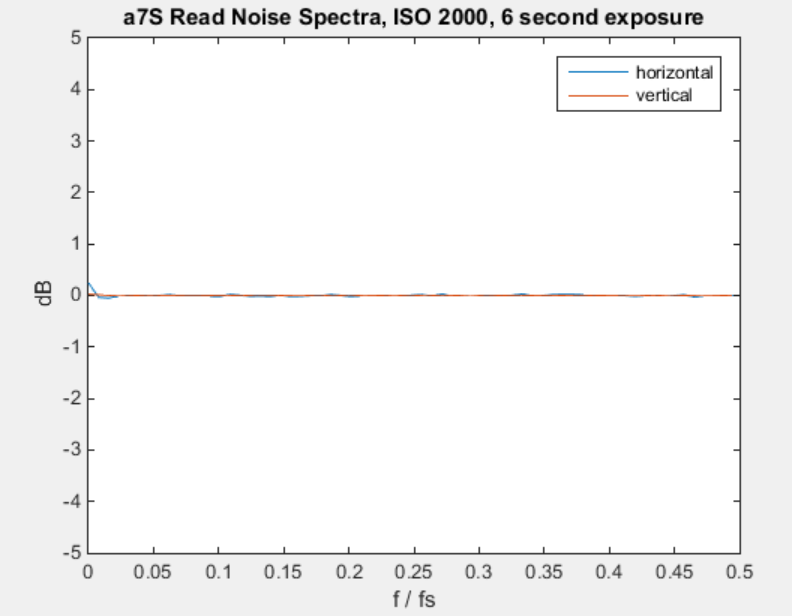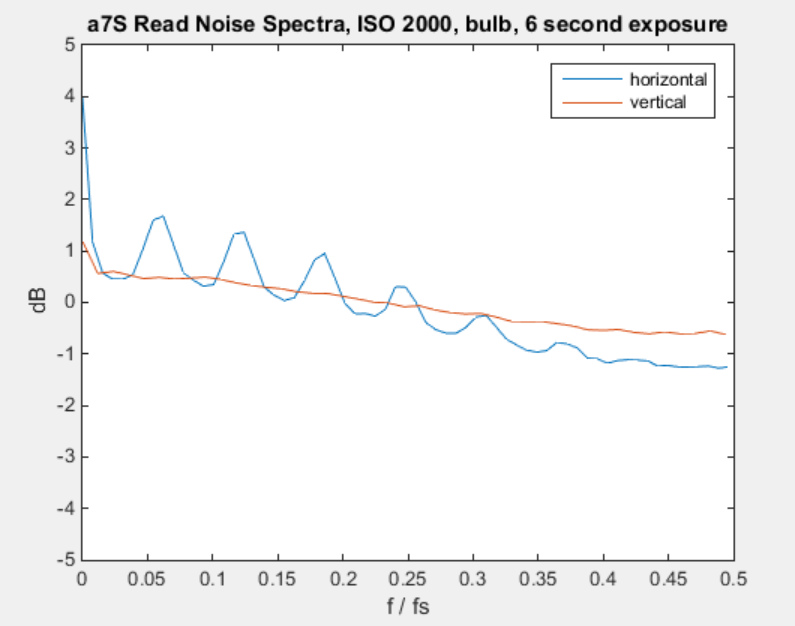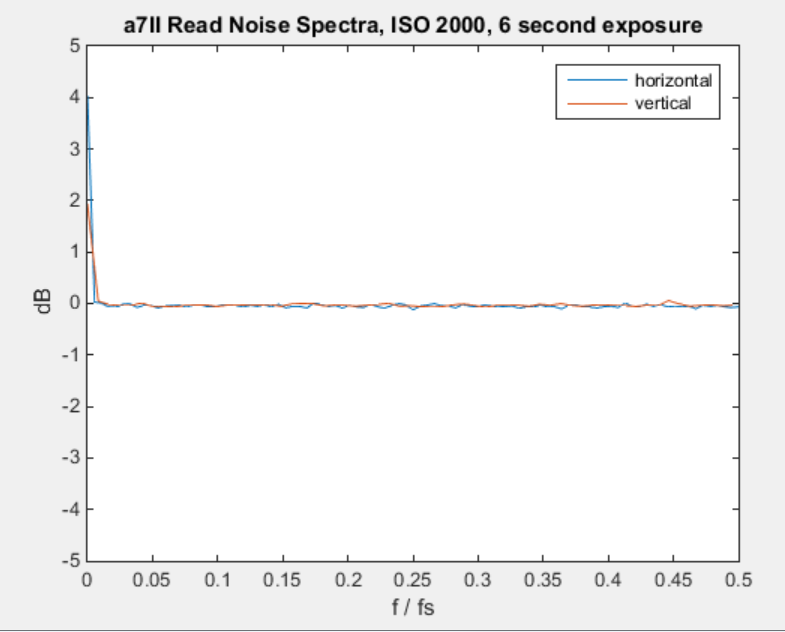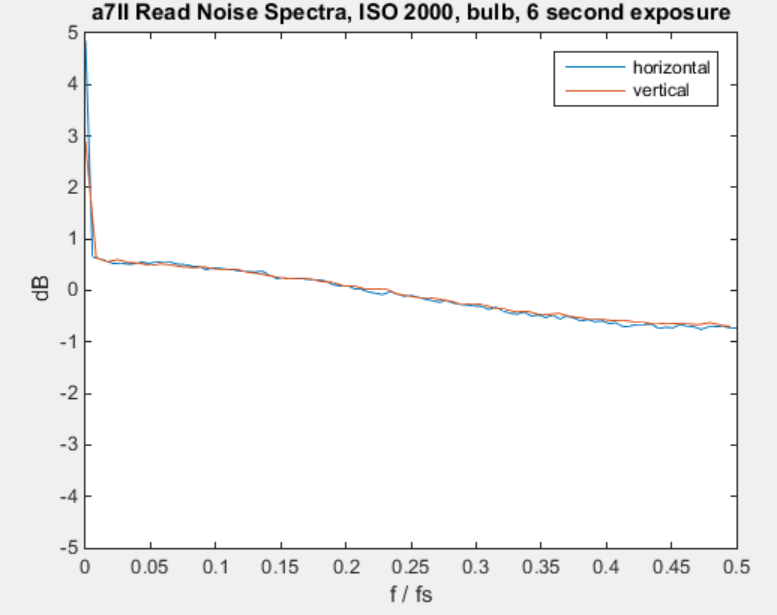It was reported on DPR that the Sony alpha 7S (a7S) performs some processing when exposure is set to “Bulb” that is different from what is done when the same length exposure is set for the camera to time.
We’ve seen before that the a7S performs some spatial filtering of raw files at ISO settings of over 50000. I used the same technique to investigate whether there was any spatial processing to images made using Bulb.
I made two dark-field photographs with the a7S, both at ISO 2000, in single shot shutter mode, one with the shutter set to 6 seconds, and one with it set to Bulb, and timed for about 6 seconds. I then analyzed the spectrum of the first green raw channel image in both the vertical and horizontal directions.
Here are the spectra for the exposure the camera timed:
This shows no evidence of spatial filtering. With cameras that have a large offset to their black points, like the Sony alpha 7 series, dark-field noise is essentially read noise. Read noise is usually white, except that it has some low-frequency components that are boosted over that. That’s exactly what we see here.
Here’s the same exposure time using Bulb:
Now there is evidence of spatial filtering, and pretty complex spatial filtering at that, given the oscillations in the horizontal spectrum.
What about the Sony alpha 7 Mark II (a7II)? Here’s the camera-timed exposure under the same conditions:
Looks untouched by spatial filtering.
Now using Bulb:
Well, we don’t have the funny wiggles like we did with the a7S, but there sure is some lowpass filtering going on.




Interesting findings …
So like at high iso, a filter similar to a 2×2 is applied in bulb mode!
Or maybe a nonlinear filter like a median filter. It’s not simply a median filter, because the center of artificial stars are suppressed relative to the captured perimeter.
Thanks Jim, I would do the same test, and you have done it now.
A bit suprised about the a7II, which become a very great overall MILC!!